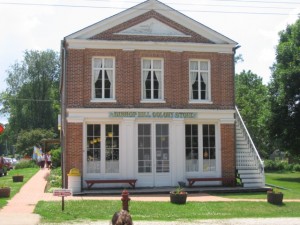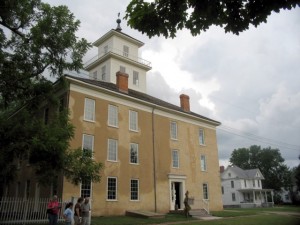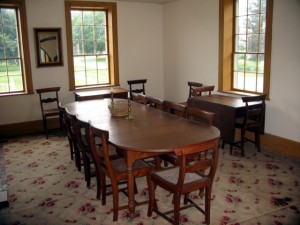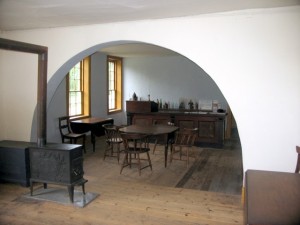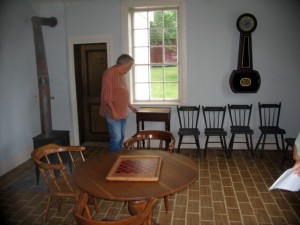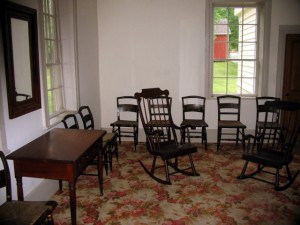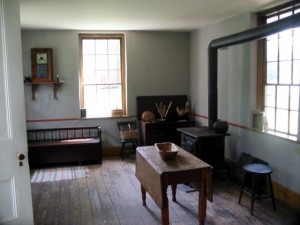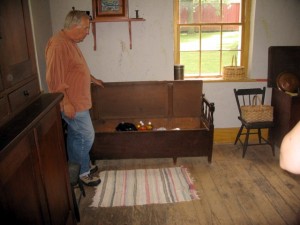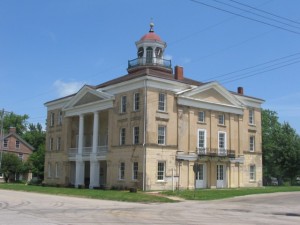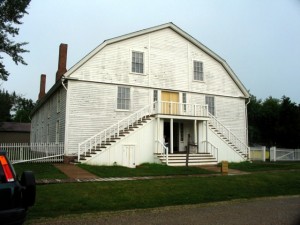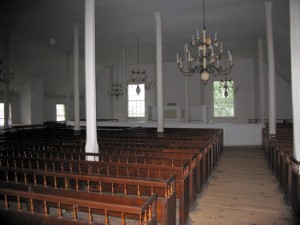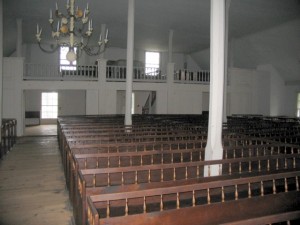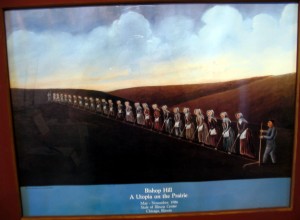When we finally finished lunch at The Red Oak, we explored the town. There wasn’t much of it — five streets running east and west and eight streets running north and south. Most of the historic buildings were clustered around Bishop Hill Park in the center of town.
Bishop Hill was a utopian community that was started in 1846 by a group of Swedish settlers under the leadership of Erik Jansson. After living in dugouts for the first winter (during which 96 members died) they built a town of bricks they made themselves and farmed more than 12,000 acres. The community was particularly well known for the furniture it crafted, much of which 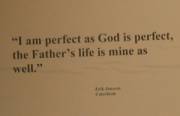
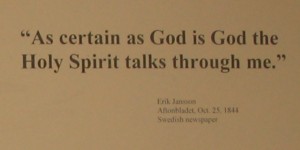
Jansson had delusions of grandeur. Some of his quotes were posted on the wall in the church. It didn’t do him a lot of good — four years after the colony began he was murdered by his son-in-law. The colony continued under a board of trustees until it dissolved in 1861.
Our first stop was the Colony Store, built in 1853. It is still a store, specializing in Swedish candy, gifts and postcards.
The Colony Hotel is owned by the state of Illinois. It was built in 1852 as housing for eight families, each with their own room. In 1855 it was converted to a hotel to accommodate the increasing-number of visitors. One of the colonists, Sven Bjorklund, ran it until the colony dissolved. He converted the third floor into a ballroom that became the town’s meeting place after the colony years.
We were met at the door by our guide, a former history teacher. He knew his stuff and was interesting and eager to tell us as much as we wanted to hear. Most of the furniture in the building was built in the colony, and he pointed out the particularly-interesting pieces.
See the piece of furniture in the back left-hand corner of the kitchen? Our guide is holding the lid open in the bottom right photo. That’s a bench with the lid shut and a bed with the lid open. It wasn’t very wide, and we all agreed it would be very much like sleeping in a coffin.
We wandered across the park past the Steeple Building. It was built in 1854 as a hotel but never used for that purpose. After some disagreement (over issues of celibacy and education) it was used as a school. It’s now a museum, but we didn’t go inside.
A thunderstorm was rolling in fast from the west as we arrived at the Colony Church (also owned by the state). The guide inside was worried about the rain, so I ran upstairs for her and closed the church doors. While she showed us around the ground floor — divided into rooms as family residences — the storm hit. We got wet as we dashed up the stairs.
The building was put up in 1848, the first building in the colony. We had the sanctuary to ourselves. It was divided down the center to separate men and women and had a balcony. The pews were very uncomfortable, as I suppose you could expect from a sect like this. We hung around until the storm settled down.
We drove to the Bishop Hill Museum, a modern building built by the state primarily to house the paintings of Olaf Krans. Krans lived in the colony for 12 years as a boy and painted scenes of life as he remembered them. I wasn’t impressed. That’s one of his paintings above — a guy leaning on a stick while watching women do the work.
We drove back through the town and looked at some of the other historic buildings from the car, then headed back toward home. We didn’t see all the buildings, but what we saw was interpreted very well and I got a good feel for what went on there.

